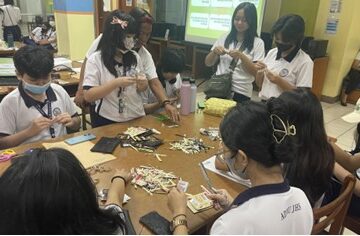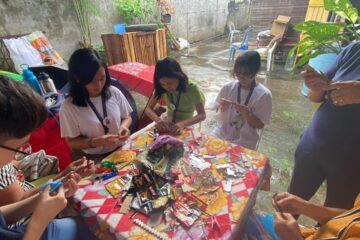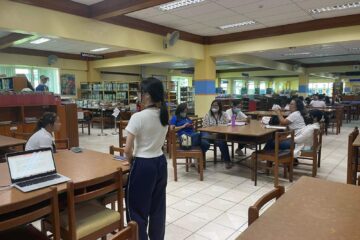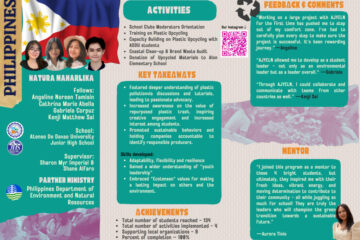Report by: Cathrina Abella, AJYELN Philippines fellow
Key findings
Increased Plastic Pollution Awareness
Participating students realized the effects of marine plastic waste in our daily lives, especially on how microplastics end up in our food systems. The participants identified how often they encounter and use plastic materials daily, and what sustainable practices they can do to replace plastic with an eco-friendlier material. After this activity, the fellows became inspired to advocate more passionately about this problem.
Corporate Accountability and Waste Brand Audit Awareness
Part of the coastal clean-up campaign is the Waste Brand Audit, which identifies the brands of plastic trash that end up in the beach and quantifies the amount of collected trash according to brand. This data will be used to engage with companies and advocate for a more accountable, responsible packaging and waste management practices.
Youth Engagement
Fellows saw the impact of the activity on their peers and how collective engagement creates a bigger impact in engaging people in leadership positions, such as government officials, concerning plastic pollution.
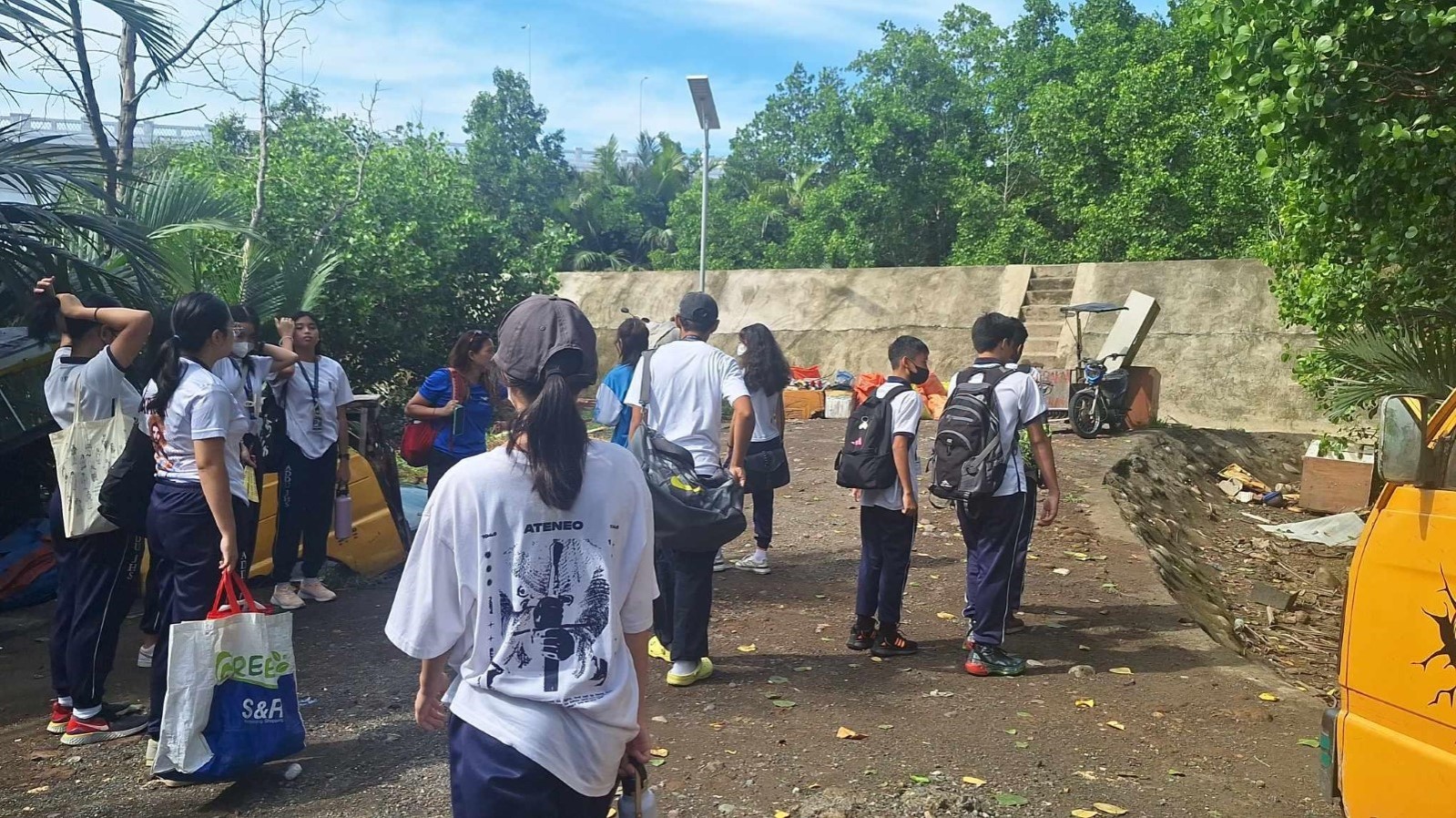
A total of 14 student members from eight clubs in Ateneo de Davao University Junior High School Unit and 4 facilitators gathered at the Matina Aplaya Coastal Area in the early morning of Saturday, October 28 to conduct a clean-up drive.
Two weeks prior, Angeline Tamisin, Natura Maharlika Team Leader contacted Mr. Nestor Cirunay, Barangay Captain of Matina Aplaya, requesting permission and cooperation from the local community to conduct the clean-up activity in their coastal area. This area has been selected due to its strategic location that receives marine plastic waste coming from the downstream river current.

Upon arrival, the AJYELN Philippines Fellows and volunteers were greeted by a representative of the community. Together with the Ecoteneo Head and project facilitator, Miss Joan Sayago gave a brief talk and history of how the plastic waste ends up in this area. Due to Davao City’s water current, the waste from different communities and rivers flows and ends up in this area, the waste in this area mostly comes from the city and not the Badjao community, an ethnic maritime minority group that resides in the coastal area. It had rained the night before this clean-up drive so there were more accumulated plastics than usual.

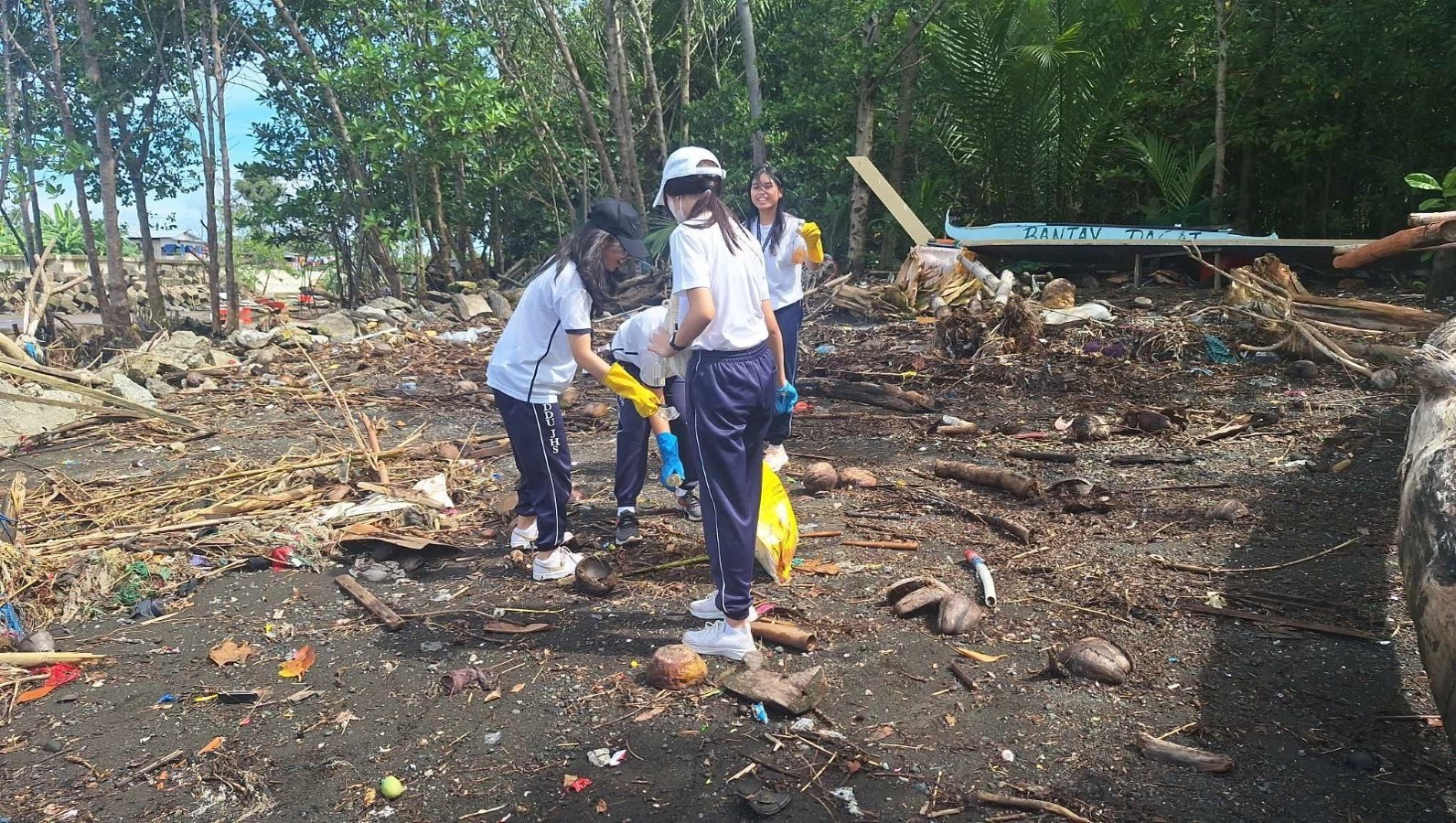
The fellows and participants were divided into four groups, which were assigned to different locations. Each group was provided with one (1) waste brand audit kit, and one (1) sack for plastic waste collection. The students were given 3 hours to collect as much plastic waste as they could, identifying according to type, brand, size, and condition.
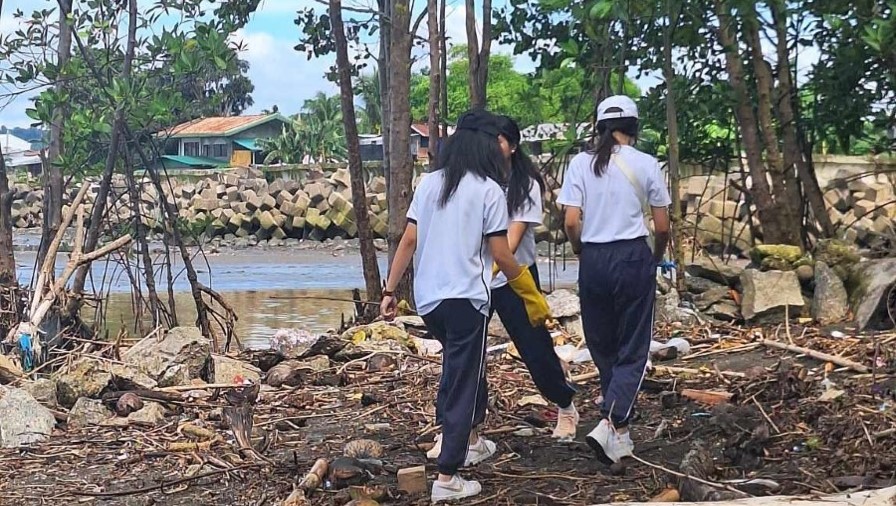
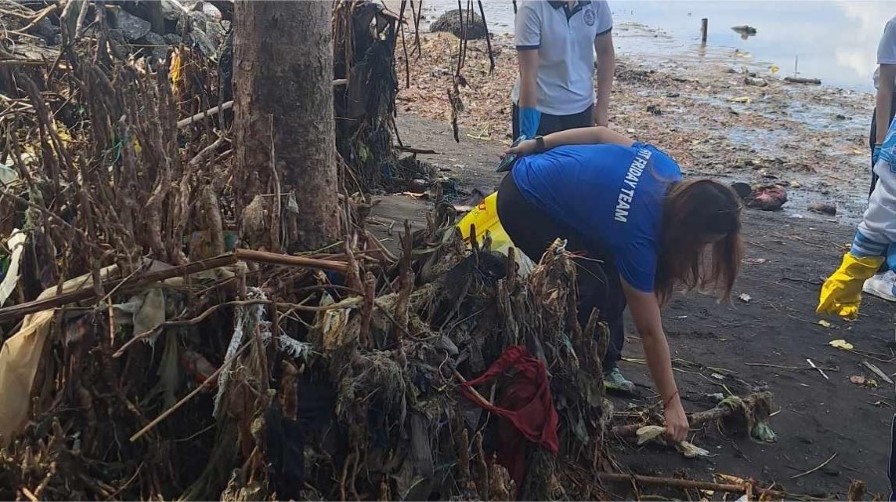
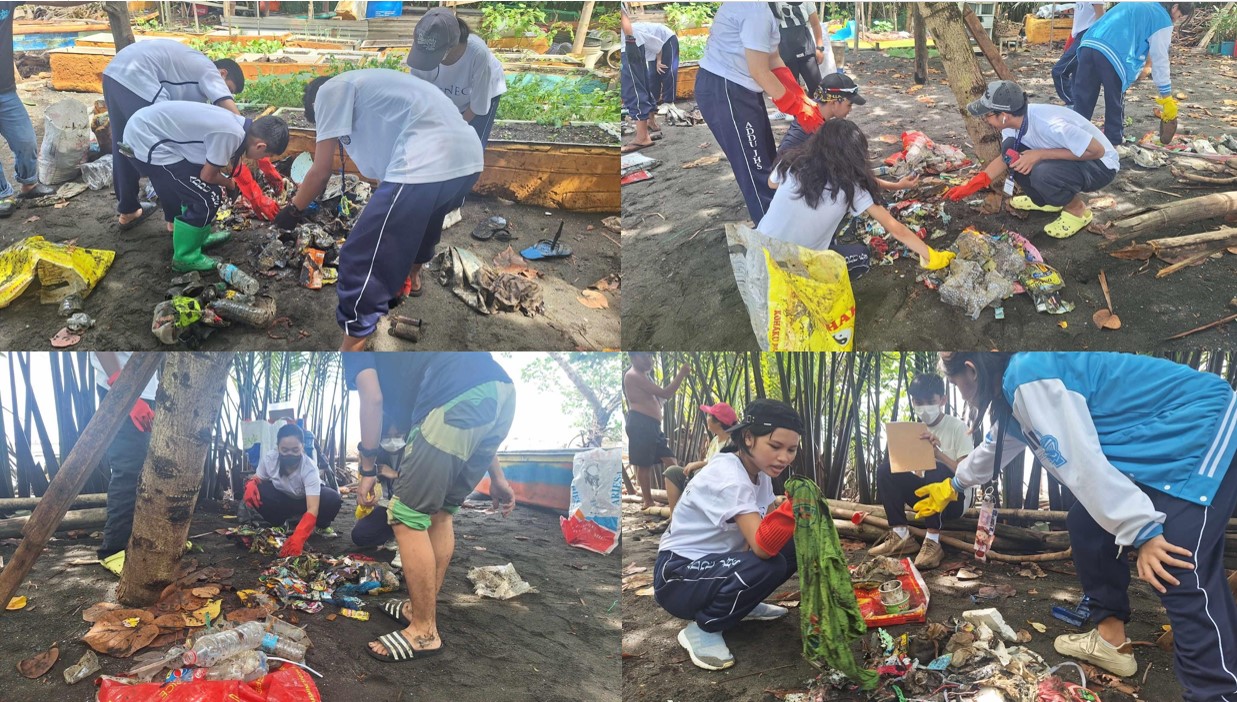
After collecting the waste, all groups started the Waste Brand Audit. This process identified the manufacturer of the brand products of collected plastic trash and quantified the amount and type of waste produced by a company. The data will be shared with the identified manufacturing companies, to encourage them to be accountable with their environmental policies and initiatives and advocate for environmentally-friendly packaging.
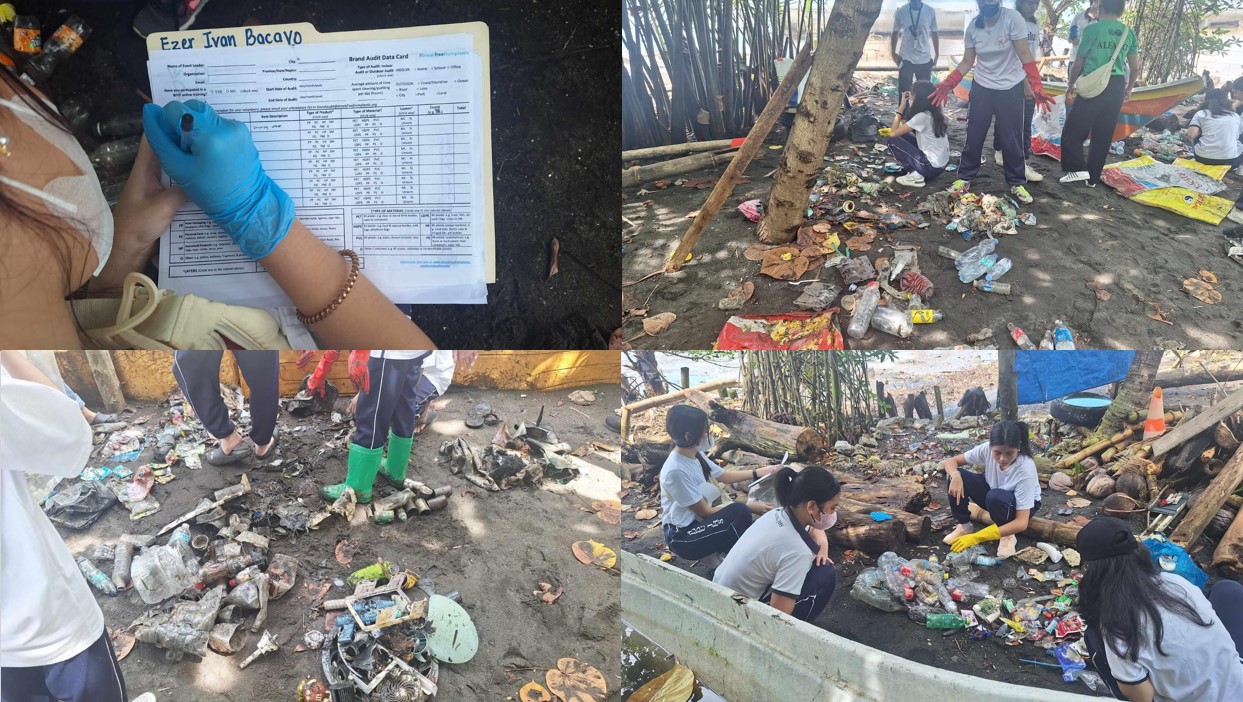
After the trash collection, the team garnered 4 full sacks of recyclable waste materials from the audit, and the 3 other sacks were filled with residual waste. The prevalent waste was mostly plastic sachets of 3-in-1 coffee packets, shampoos, PET bottles, plastic jugs, and scrap materials from appliances.

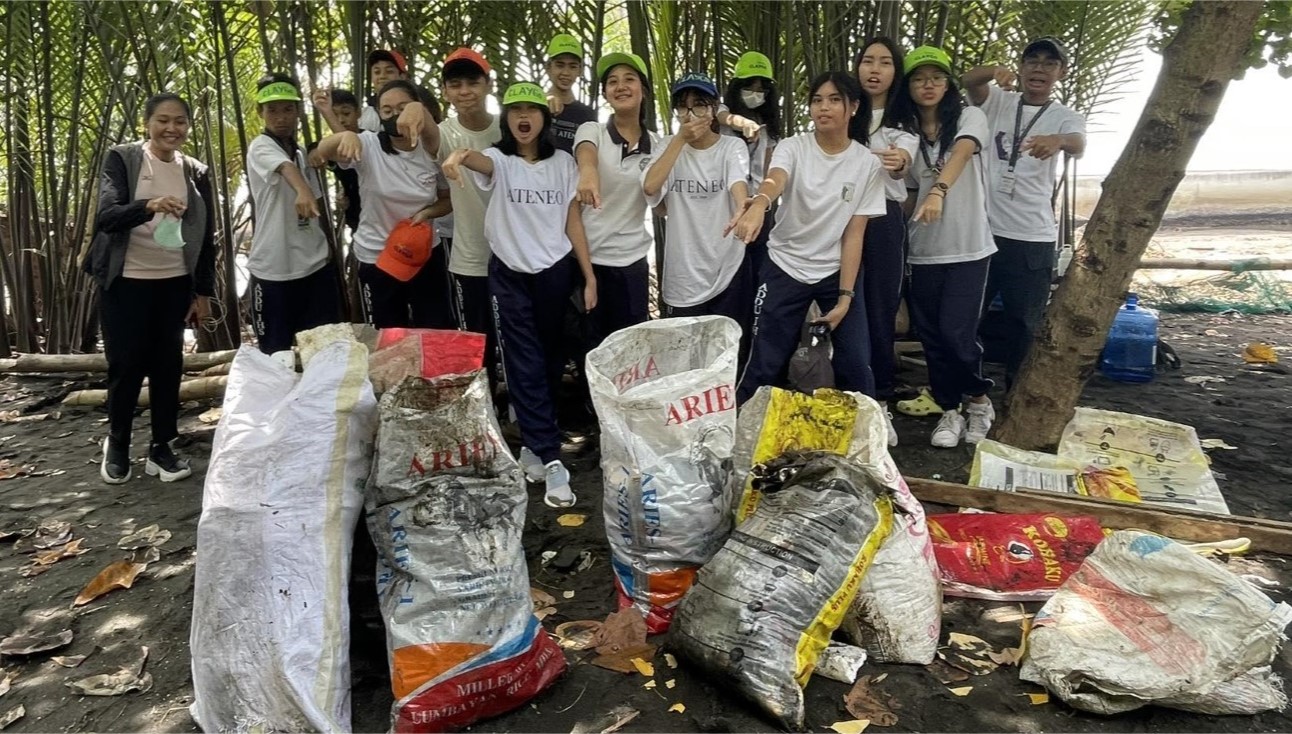
In conclusion, the Natura Maharlika Coastal Clean-up not only immersed the students in experiencing the effects of plastic consumption and plastic waste in our environment but also raised awareness of its impact on our daily lives and showed the heightened gravity of the crisis on a local scale.


